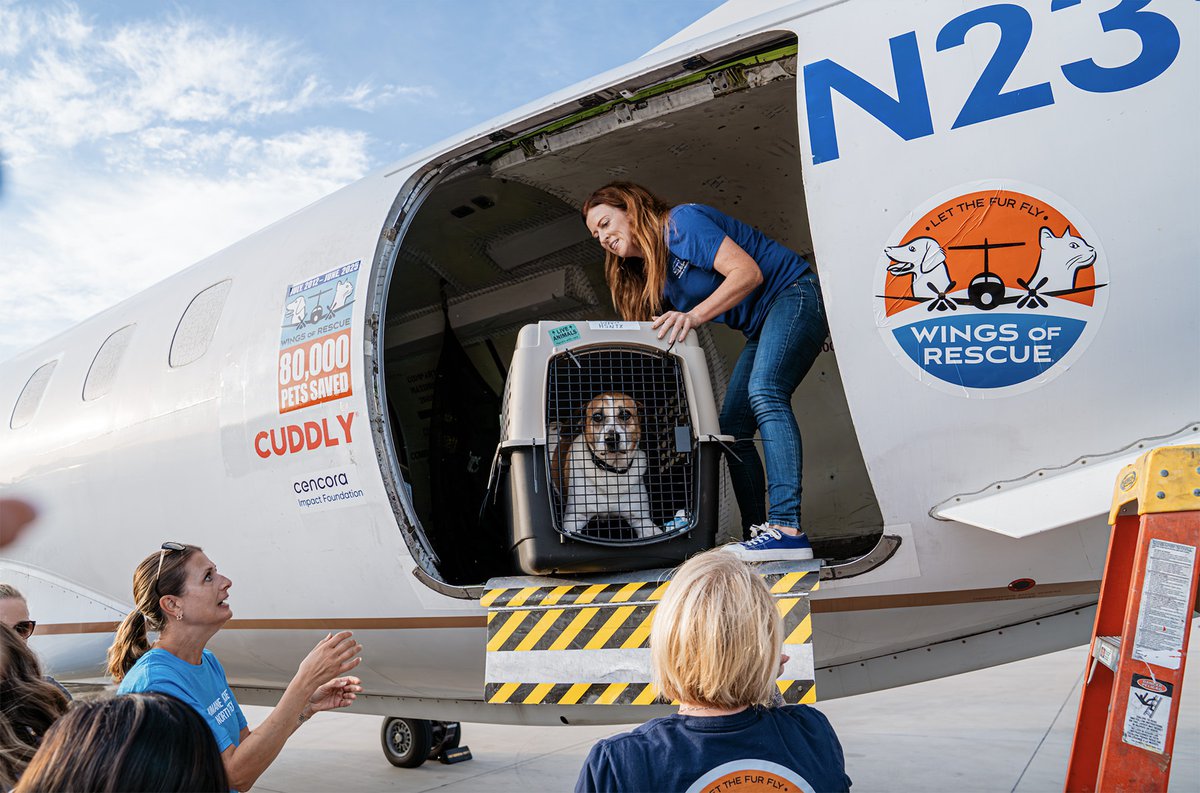On July 4, the Guadalupe River in Kerr County surged to nearly 26 feet in under an hour, unleashing catastrophic flash flooding across the Texas Hill Country. The sudden deluge devastated homes, camps, and communities, leaving hundreds displaced and searching for loved ones who had gone missing. Amid the chaos, local shelters were overwhelmed — and the Humane Society of North Texas (HSNT), in partnership with Wings of Rescue, answered the call.
Together, they orchestrated a lifesaving operation, flying out more than 700 shelter pets from Central Texas to free kennel space, enabling lost and displaced pets to be reunited with their families — a crucial, compassionate mission amid one of Texas’s most devastating natural disasters.
“I feel like it gave our community here in North Texas a purpose and a way to get involved,” said Cassie Davidson, senior director at the Humane Society of North Texas. “HSNT has long been recognized as a trusted, credible organization here in North Texas. So when the disaster hit, people were looking for a way to help.”
This trust translated into swift action. Over ten days, Wings of Rescue flew 722 shelter pets out of Central Texas, moving them to partner shelters across the country to clear desperately needed kennel space. North Texas received 254 of those animals, with HSNT taking in 107.
The goal was clear: to free shelter space for lost and found pets to be reunited with their owners, who were displaced by the floods. “These were already shelter animals waiting for adoption,” Davidson said. “Moving them saved lives — plain and simple.”
This massive operation was about more than just animals in the air. Wings of Rescue also flew 10 tons — 20,000 pounds — of veterinary supplies and humanitarian aid into flood zones over three flights.
Preparation was key. To accommodate incoming pets, HSNT flew out 70 of their own animals to partner shelters before the first Central Texas arrivals.
“Please remember, this is something that we do every time communities need help,” Davidson said. “Our community support extends beyond Texas. When Los Angeles had their wildfires, we flew pets in. When there are natural disasters and hurricanes happening in Florida or New Orleans, Louisiana, we will fly pets into us. We will clear space. So again, we knew that we were going to stand in the gap and fly pets to us.”
The community’s response was overwhelming. “It was incredible. We had more fosters than we did pets to go into emergency foster homes. That’s how fast this happened.”
Behind the scenes, there’s no strict disaster playbook. Instead, HSNT relies on years of experience and a close-knit team that knows how to respond when every minute counts.
“Internally, do we have a document that says, ‘Cassie, this is what you need to do?’ I would say no,” she says. “We do have SOPs (Standard Operating Procedures) for medical, we have SOPs for behavior — for those procedures — but we don’t have anything that would outline what me and my team need to do, or what someone else’s team needs to do, necessarily. It just goes basis by basis and using common sense.”
The payoff — the reason for the grueling hours and emotional strain — comes in stories like this: a couple adopted a bonded brother-and-sister pair of dogs flown in from the rescue flights.
“They were like, ‘This completes our family. We have been looking for this missing piece for so long,” Davidson recalled. “Even through this tragedy, these pets have brought hope back here to North Texas.”
By clearing shelter space, HSNT helped create the room for lost pets to come home, preventing what could have been a heartbreaking alternative.
“If those pets that Wings of Rescue flew out had not been flown to partner shelters, what is the alternative?” Davidson asks. “I think we all know.”
